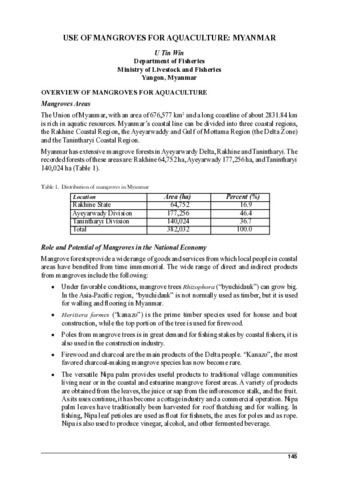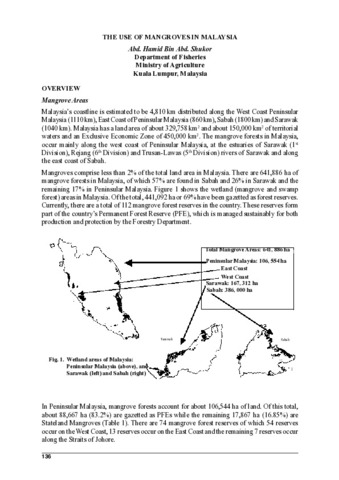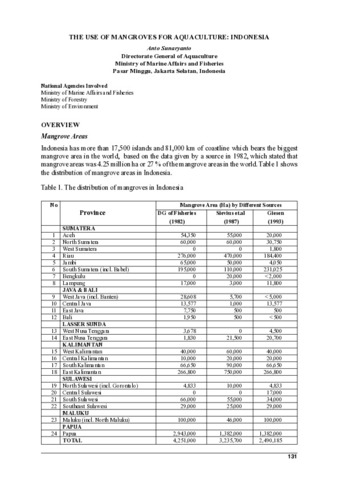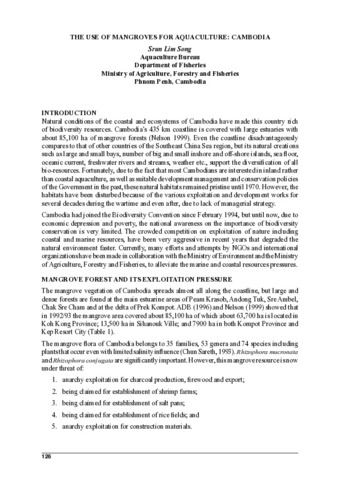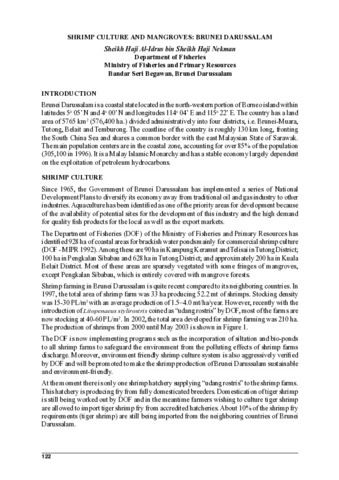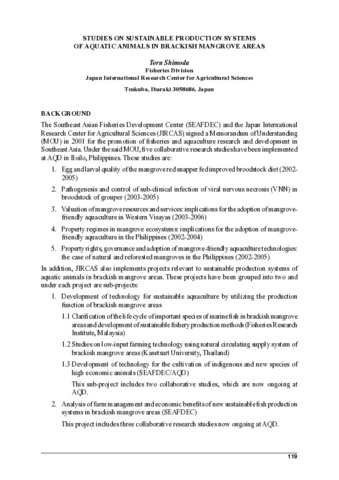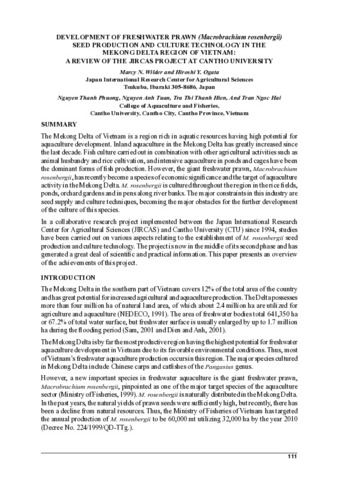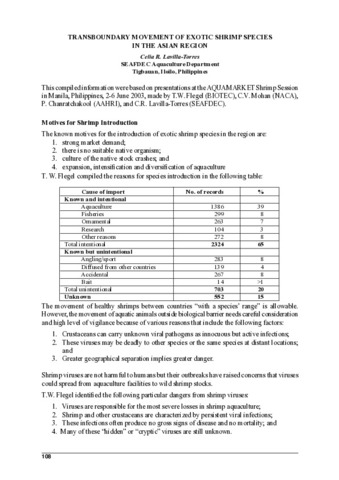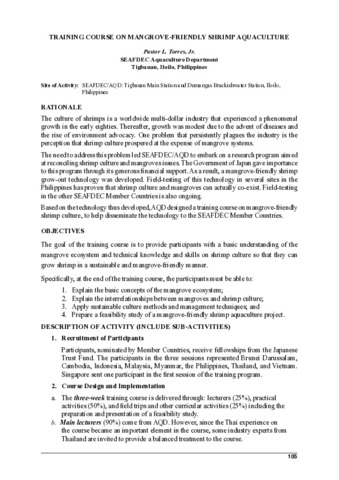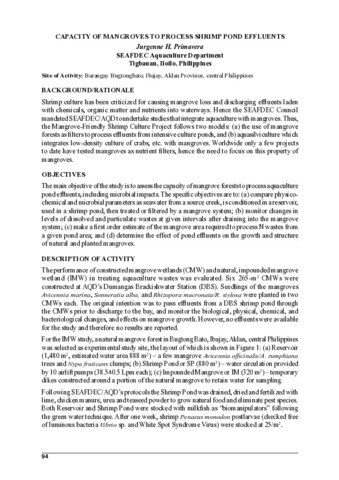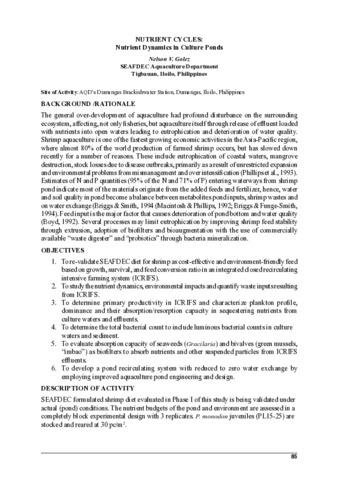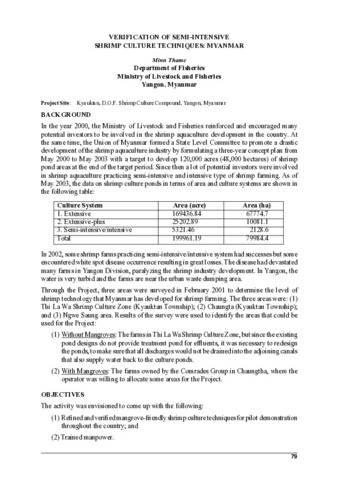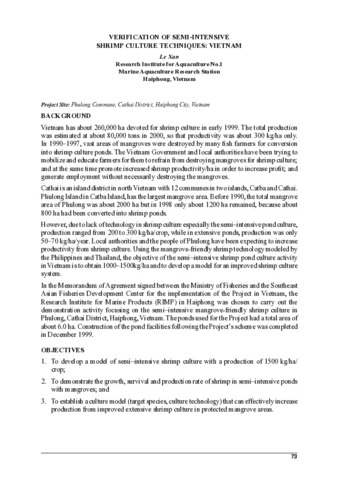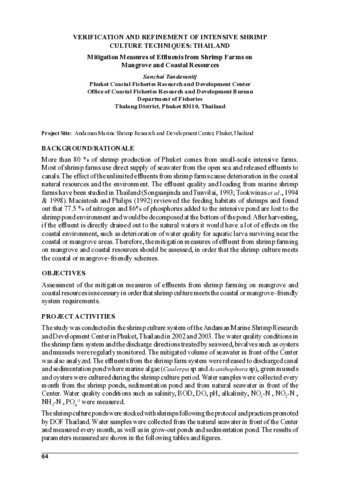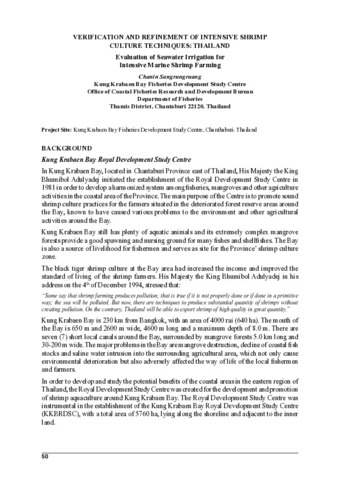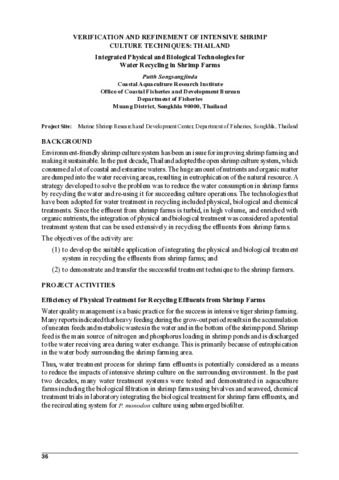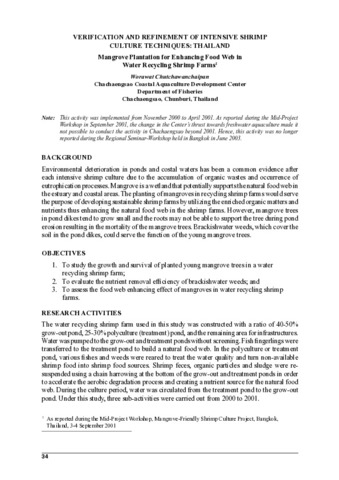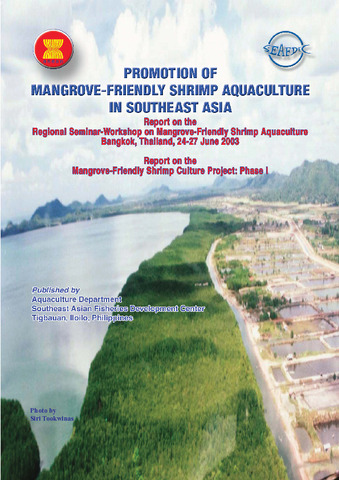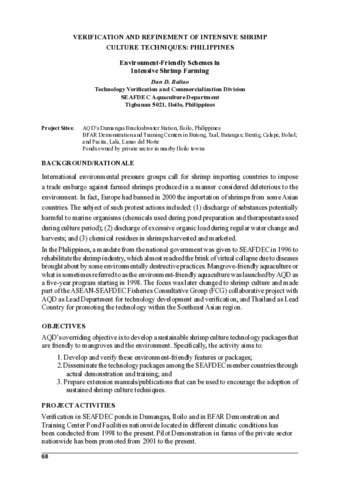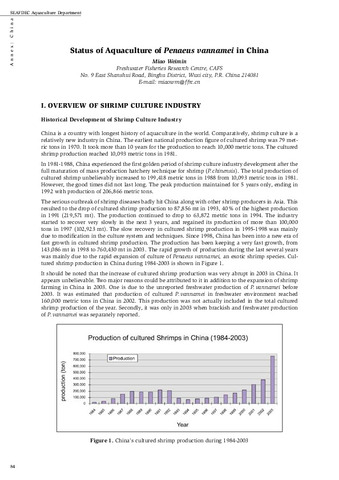Institutional and Meeting Reports: Recent submissions
Now showing items 201-220 of 289
-
Use of mangroves for aquaculture: Myanmar.
(Aquaculture Department, Southeast Asian Fisheries Development Center, 2004)Aquaculture has only started to develop rapidly in the past few decades, due to better knowledge of culture species, improved methodologies and techniques in breeding, nutrition and increasing demand for food fish of ... -
The use of mangroves in Malaysia
(Aquaculture Department, Southeast Asian Fisheries Development Center, 2004) -
The use of mangroves for aquaculture: Indonesia.
(Aquaculture Department, Southeast Asian Fisheries Development Center, 2004)Indonesia has more than 17,500 islands and 81,000 km of coastline which bears the biggest mangrove area in the world, based on the data given by a source in 1982, which stated that mangrove areas was 4.25 million ha or 27 ... -
The use of mangroves for aquaculture: Cambodia.
(Aquaculture Department, Southeast Asian Fisheries Development Center, 2004)Natural conditions of the coastal and ecosystems of Cambodia have made this country rich of biodiversity resources. Cambodia’s 435 km coastline is covered with large estuaries with about 85,100 ha of mangrove forests (Nelson ... -
Shrimp culture and mangroves: Brunei Darussalam.
(Aquaculture Department, Southeast Asian Fisheries Development Center, 2004)Brunei Darussalam is a coastal state located in the north-western portion of Borneo island within latitudes 5o 05’ N and 4o 00’ N and longitudes 114o 04’ E and 115o 22’ E. The country has a land area of 5765 km2 (576,400 ... -
Studies on sustainable production systems of aquatic animals in brackish mangrove areas.
(Aquaculture Department, Southeast Asian Fisheries Development Center, 2004)The Southeast Asian Fisheries Development Center (SEAFDEC) and the Japan International Research Center for Agricultural Sciences (JIRCAS) signed a Memorandum of Understanding (MOU) in 2001 for the promotion of fisheries ... -
Development of freshwater prawn (Macrobrachium rosenbergii) seed production and culture technology in the Mekong Delta Region of Vietnam: A review of the JIRCAS Project at Cantho University.
(Aquaculture Department, Southeast Asian Fisheries Development Center, 2004)The Mekong Delta of Vietnam is a region rich in aquatic resources having high potential for aquaculture development. Inland aquaculture in the Mekong Delta has greatly increased since the last decade. Fish culture carried ... -
Transboundary movement of exotic shrimp species in the Asian region.
(Aquaculture Department, Southeast Asian Fisheries Development Center, 2004)This compiled information were based on presentations at the AQUAMARKET Shrimp Session in Manila, Philippines, 2-6 June 2003, made by T.W. Flegel (BIOTEC), C.V. Mohan (NACA), P. Chanratchakool (AAHRI), and C.R. Lavilla-Torres ... -
Training course on mangrove-friendly shrimp aquaculture.
(Aquaculture Department, Southeast Asian Fisheries Development Center, 2004)The culture of shrimps is a worldwide multi-dollar industry that experienced a phenomenal growth in the early eighties. Thereafter, growth was modest due to the advent of diseases and the rise of environment advocacy. One ... -
Capacity of mangroves to process shrimp pond effluents.
(Aquaculture Department, Southeast Asian Fisheries Development Center, 2004)Shrimp culture has been criticized for causing mangrove loss and discharging effluents laden with chemicals, organic matter and nutrients into waterways. Hence the SEAFDEC Council mandated SEAFDEC/AQD to undertake studies ... -
Nutrient cycles: Nutrient dynamics in culture ponds.
(Aquaculture Department, Southeast Asian Fisheries Development Center, 2004)The general over-development of aquaculture had profound disturbance on the surrounding ecosystem, affecting, not only fisheries, but aquaculture itself through release of effluent loaded with nutrients into open waters ... -
Verification of semi-intensive shrimp culture techniques: Myanmar.
(Aquaculture Department, Southeast Asian Fisheries Development Center, 2004)In the year 2000, the Ministry of Livestock and Fisheries reinforced and encouraged many potential investors to be involved in the shrimp aquaculture development in the country. At the same time, the Union of Myanmar formed ... -
Verification of semi-intensive shrimp culture techniques: Vietnam.
(Aquaculture Department, Southeast Asian Fisheries Development Center, 2004)Vietnam has about 260,000 ha devoted for shrimp culture in early 1999. The total production was estimated at about 80,000 tons in 2000, so that productivity was about 300 kg/ha only. In 1990–1997, vast areas of mangroves ... -
Mitigation measures of effluents from shrimp farms on mangrove and coastal resources.
(Aquaculture Department, Southeast Asian Fisheries Development Center, 2004)More than 80 % of shrimp production of Phuket comes from small-scale intensive farms. Most of shrimp farms use direct supply of seawater from the open sea and released effluents to canals. The effect of the unlimited ... -
Evaluation of seawater irrigation for intensive marine shrimp farming.
(Aquaculture Department, Southeast Asian Fisheries Development Center, 2004)The seawater irrigation system has benefited the intensive marine shrimp culture making shrimp culture sustainable and increasing shrimp production. The results obtained from this research study indicated that the adverse ... -
Integrated physical and biological technologies for water recycling in shrimp farms.
(Aquaculture Department, Southeast Asian Fisheries Development Center, 2004)Environment-friendly shrimp culture system has been an issue for improving shrimp farming and making it sustainable. In the past decade, Thailand adopted the open shrimp culture system, which consumed a lot of coastal and ... -
Mangrove plantation for enhancing food web in water recycling shrimp farms.
(Aquaculture Department, Southeast Asian Fisheries Development Center, 2004)Environmental deterioration in ponds and costal waters has been a common evidence after each intensive shrimp culture due to the accumulation of organic wastes and occurrence of eutrophication processes. Mangrove is a ... -
Promotion of mangrove-friendly shrimp aquaculture in Southeast Asia
(Aquaculture Department, Southeast Asian Fisheries Development Center, 2004)Sulit, Virgilia T. -
Environment-friendly schemes in intensive shrimp farming.
(Aquaculture Department, Southeast Asian Fisheries Development Center, 2004)International environmental pressure groups call for shrimp importing countries to impose a trade embargo against farmed shrimps produced in a manner considered deleterious to the environment. In fact, Europe had banned ... -
Status of aquaculture of Penaeus vannamei in China.
(Aquaculture Department, Southeast Asian Fisheries Development Center, 2005)China is a country with longest history of aquaculture in the world. Comparatively, shrimp culture is a relatively new industry in China. The earliest national production figure of cultured shrimp was 79 metric tons in ...

